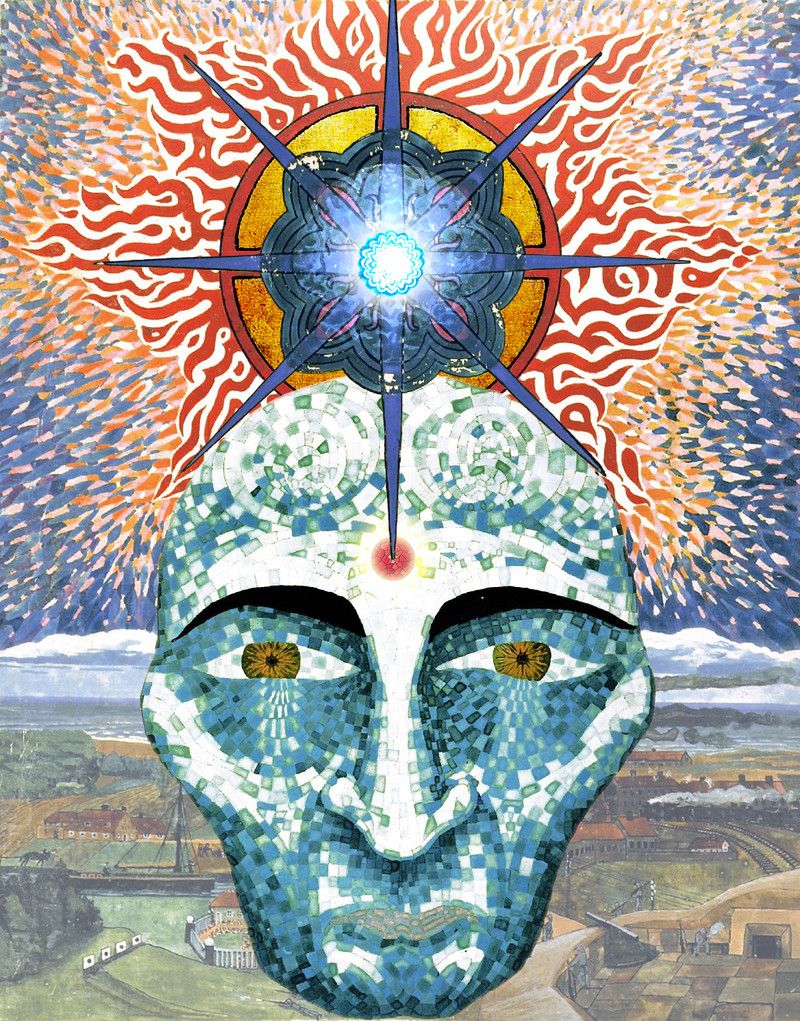
“There are spiritual processes of transformation in the psyche”. (1) Jung framed the psyche as a purposive self-regulating system aimed toward the unfolding of inherent potentials. According to Jung symbols play a dynamic role in the psyche’s movement toward wholeness. Murray Stein emphasizes: “Transformation is realization, revelation, and emergence, not self-improvement, change for the better, or becoming a more ideal person. The transforming person is someone who realizes the inherent self to the maximum extent possible…” (2)
Jung sees transformation as involving the entire psyche. When symbols of transformation become activated, they become a primary motivator of change and serve to organize the structures and patterns directed by life energy (libido).
True symbols carry profound meaning of that which is difficult to describe, explain or fully understand, especially if it represents an integration of opposites. Jung explains that a symbol is “born of man’s highest spiritual aspirations,” and “from the deepest roots of his being…from the lowest and most primitive levels of the psyche.” (3)
Symbols may spontaneously emerge in the psyche in the form of a dream or image (some of which may be terrifying), or a (disabling) symptom. Such symbols need to be understood cognitively. They may be an expression of unprocessed indigestible emotional pain, whether current grief or representative of childhood trauma, intrapsychic or interpersonal conflicts. Powerful, autonomous, and unconscious complexes, blocking life energy, may also present in a symbolic image.
According to Jung we do not consciously choose symbols, it is rather the “transcendent function” that produces them. In the Red Book Jung describes how “the symbol can be neither thought up nor found: it becomes.” (4) He explains that symbols are the best possible expression “of a relatively unknown thing, which…cannot be more clearly or characteristically represented.” (5) People often use symbols as historical markers, signifying something important. The moment we know what the symbol stands for it becomes a sign - no longer a symbol. Universal symbols often point to the ineffable Mystery of Life.
Written for @jungsouthernafrica
References: (1) Jung, Man and his Symbols, 1978, p. 8 (2) Stein, Transformation: Emergence of the Self. p. 137 (3) Jung, Psych Types, par. 823 (4) Jung, Red Book, par. 311 (5) Jung, Psych Types, par. 815
Sources: https://jungchicago.org/blog/murray-stein-symbols-and-the-transformation-of-the-psyche/ http://theredbookofcgjung.blogspot.com/2009/12/jung-on-symbols-and-self.html
Image credit: Carl Jung (Red Book)
#jung #carljung #jungpsychology #jungianpsychology #depthpsychology #analyticalpsychology #consciousness #unconscious #archetypes #psyche #symbol #symbolism #symbolic #transformation #symbolsoftransformation #change #murraystein #complexes #transcendentfunction #childhoodtrauma #intrapsychic #images #dream #capetown #capetownliving #capetownlife #southernafrica